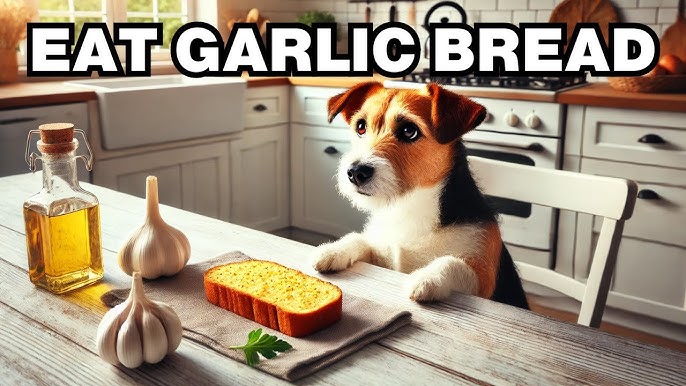Introduction:
Dogs eating cat poop might seem gross to humans, but it’s relatively common. This behavior, called coprophagia, is driven by natural instincts, nutritional deficiencies, or even curiosity. Understanding why dogs engage in this behavior is essential for pet owners who want to ensure their pets remain healthy and happy. This article explores the reasons behind coprophagia, its potential risks, and how to prevent it effectively.Why Do Dogs Eat Cat Poop?
Understanding Coprophagia: What Is It?
Coprophagia is a term used to describe the act of consuming feces. While this behavior is more common in puppies, adult dogs can exhibit it too. It might be unsettling to pet owners, but for dogs, it’s often a behavior rooted in instinct. In the wild, scavenging plays a crucial role in survival, and feces can be a source of nutrition. This section explores the broader context of coprophagia in dogs.
Reasons Dogs Eat Cat Poop
1. Nutritional Deficiencies
Dogs eating cat poop may be a sign of an unbalanced diet. Cat feces contain remnants of undigested nutrients because cats have a higher protein requirement. Dogs instinctively recognize these nutrients and might be drawn to them, especially if their diet lacks key vitamins or minerals. Ensuring your dog has a balanced diet can help mitigate this issue.
2. Curiosity and Exploration
Dogs are naturally curious creatures, especially when they’re young. Their keen sense of smell can lead them to explore unusual scents, including cat litter boxes. Puppies, in particular, might eat cat poop simply out of curiosity, as they explore their environment through taste and smell.
3. Instinctual Scavenging
In the wild, dogs are scavengers and opportunistic eaters. Eating feces could be an evolutionary trait that helped their ancestors survive during times of food scarcity. While modern pet dogs don’t need to scavenge, this instinct remains.
4. Behavioral Issues or Anxiety
Some dogs eat feces as a coping mechanism for stress or anxiety. If a dog feels neglected, bored, or overly anxious, they might resort to destructive behaviors like coprophagia. Addressing these underlying emotional needs is crucial for prevention.
5. Attention-Seeking Behavior
If a dog notices that eating cat poop garners a strong reaction from its owner, it may continue doing so for attention, even if it’s negative attention. Positive reinforcement training can help shift this behavior.
6. Medical Conditions
Certain medical conditions, such as malabsorption syndromes, diabetes, or thyroid imbalances, can increase a dog’s appetite and drive them to eat unusual items, including feces. If the behavior persists, consulting a veterinarian is crucial.
Risks of Dogs Eating Cat Poop
1. Parasites
Cat feces can contain parasites like Toxoplasma gondii or roundworms, which are transmissible to dogs. These parasites can cause severe health issues, including gastrointestinal distress and weakened immunity.
2. Bacterial Infections
Consuming feces exposes dogs to harmful bacteria such as Salmonella or E. coli. While some dogs’ digestive systems are resilient, exposure to these pathogens can lead to serious infections.
3. Intestinal Blockages from Cat Litter
If a dog eats cat poop from a litter box, they might also ingest clumps of cat litter. This can lead to blockages in the digestive tract, which may require emergency surgery.
4. Poor Hygiene and Secondary Illnesses
A dog that regularly consumes feces might transfer harmful bacteria to humans or other pets. Poor hygiene can lead to skin infections, bad breath, and other secondary illnesses.
How to Prevent Dogs from Eating Cat Poop
Preventing your dog from consuming cat feces requires a combination of environmental management, training, and understanding your dog’s behavior. Let’s delve into practical solutions.
1. Secure the Cat Litter Box
One of the simplest ways to stop your dog from accessing cat poop is to make the litter box inaccessible. Options include:
- Covered Litter Boxes: A litter box with a lid or small entry hole prevents larger dogs from accessing it.
- Elevated Placement: Place the litter box on a surface or in a location your dog can’t reach, such as a countertop or a separate room.
- Gates or Barriers: Use a baby gate with a small opening for cats to enter but blocks your dog.
2. Adjust Your Dog’s Diet
Ensure your dog’s diet meets all their nutritional needs. High-quality dog food with the right balance of protein, fiber, and vitamins can curb cravings for non-food items. If unsure, consult your vet for dietary recommendations.
3. Use Deterrents
There are products designed to make feces unappealing to dogs, such as stool additives for cats that make their poop taste bitter. You can also use natural deterrents like hot pepper powder around the litter box area to discourage your dog from approaching it.
4. Supervise and Redirect
If your dog is caught in the act, avoid punishment as it can worsen the behavior. Instead:
- Redirect their attention with a toy, treat, or command like “Leave it.”
- Reward your dog for responding positively to redirection, reinforcing good behavior.
5. Provide Enrichment Activities
Dogs with boredom or anxiety often develop destructive habits like coprophagia. Keep your dog mentally and physically stimulated by:
- Engaging in regular playtime.
- Providing interactive toys or puzzles.
- Ensuring they get enough exercise.
6. Address Anxiety and Stress
For dogs eating cat poop due to anxiety, addressing the root cause is critical. Consider:
- Spending more quality time with your pet.
- Using calming aids like pheromone diffusers.
- Consulting a professional trainer or behaviorist for guidance.
Training Techniques to Stop Coprophagia
Training plays a vital role in addressing coprophagia. The following methods focus on reinforcing good habits and discouraging unwanted behavior.
1. Teach the “Leave It” Command
This command helps deter your dog from approaching undesired items, including cat poop.
- Start by offering your dog a treat in one hand and covering it with your other hand when they approach it.
- Say “Leave it” and wait until your dog stops trying to reach the treat. Reward them with a different treat.
- Gradually practice this command in real-life scenarios, such as near the litter box.
2. Reward Good Behavior
Positive reinforcement helps encourage desired behaviors. Whenever your dog ignores the litter box or chooses a toy over eating poop, reward them with praise, treats, or affection.
3. Create Structured Feeding Times
Establishing a consistent feeding schedule for both your dog and cat can minimize access to freshly deposited cat feces. After your cat uses the litter box, clean it promptly to remove temptation.
4. Use Crate or Room Training
If unsupervised, confine your dog to a space away from the litter box. Over time, this reduces opportunities for them to develop the habit.
How to Address Medical Concerns Related to Coprophagia
If your dog persistently eats cat poop despite preventive measures, there could be underlying medical issues at play. Here’s how to address them:
1. Visit a Veterinarian
A vet can conduct tests to rule out:
- Nutritional deficiencies.
- Parasites.
- Gastrointestinal disorders.
- Conditions like diabetes or hypothyroidism.
2. Discuss Supplements
Some dogs benefit from digestive enzyme supplements or probiotics that improve nutrient absorption, reducing their drive to seek alternative sources.
3. Treat Parasites Promptly
If your dog contracts parasites from cat feces, your vet will recommend an appropriate deworming treatment. Routine parasite screenings can prevent recurring issues.
Long-Term Management and Monitoring
Managing a dog prone to eating cat poop requires consistent effort. Here’s how to ensure the behavior doesn’t return over time:
1. Maintain Cleanliness
Regularly clean the litter box to minimize the availability of cat feces. Automated litter boxes that scoop waste immediately are excellent for busy pet owners.
2. Monitor Interactions
Supervise your dog around the litter box, especially if they have a history of eating feces. This helps catch the behavior early and reinforces positive actions.
3. Stay Patient and Consistent
Behavioral changes take time. Stick to training routines and remain patient as your dog learns new habits. Consistency is key to success.
The Importance of Preventing Coprophagia
While eating cat poop might seem harmless to some, it poses genuine risks to your dog’s health and hygiene. Prevention not only protects your dog from potential illnesses but also strengthens your bond through effective training and care. Taking proactive measures ensures a safer and more pleasant living environment for both pets and humans.
Conclusion:
Dogs eating cat poop might be natural, but it’s not ideal. By understanding the reasons behind this behavior and implementing practical solutions, you can safeguard your dog’s health while maintaining harmony in a multi-pet household. Whether through diet adjustments, training, or medical consultations, addressing coprophagia ensures a happy, healthy life for your furry friend.
FAQ:
Is it harmful for dogs to eat cat poop?
Yes, eating cat poop can be harmful to dogs. Cat feces can contain harmful bacteria like Salmonella or E. coli and parasites such as Toxoplasma gondii. Ingesting cat litter alongside the feces may also lead to digestive blockages. While not all cases result in immediate illness, the risks are significant enough to warrant prevention.
How can I stop my dog from eating cat poop when I’m not home?
Preventing access is the best solution when you’re away. Use a covered or top-entry litter box that your dog can’t access. Placing the litter box in a separate room secured with a baby gate, or using a door latch that allows the cat to enter but keeps the dog out, are also effective strategies. Automatic litter boxes that clean themselves immediately can further reduce temptation.
Could my dog eating cat poop indicate a health problem?
Yes, this behavior can sometimes signal an underlying health issue. Nutritional deficiencies, gastrointestinal disorders, or medical conditions like diabetes and thyroid problems can increase a dog’s appetite and lead to coprophagia. If the behavior persists despite training and preventive measures, it’s essential to consult a veterinarian for a thorough examination and possible treatment.




